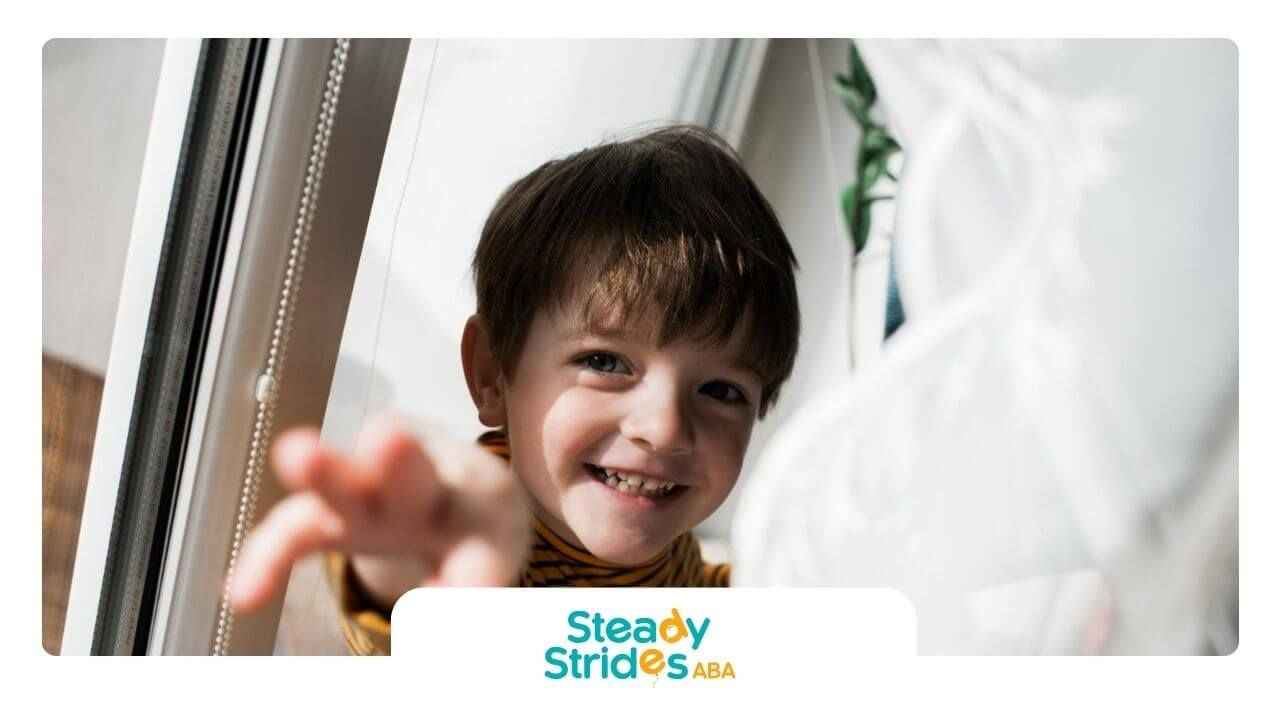How Long Does It Take for ABA Therapy to Work?
Key Highlights
- ABA therapy supports children with autism by enhancing their communication, behavior, and social skills.
- The effectiveness of ABA therapy depends on various factors, such as the child’s needs, therapy intensity, and program quality.
- Progress is often visible within 3-6 months, with major milestones occurring over the course of a year or more.
- Early intervention and consistent therapy typically lead to better outcomes.
- Family involvement is key in reinforcing positive behaviors across settings.
- Understanding realistic timelines can help caregivers set expectations for their child’s journey.
Many parents ask how long it will take to see real progress in their child after starting ABA therapy. The truth is, there’s no set answer—it depends on a variety of factors like the child’s needs and how often they engage in therapy.
I’ve worked with many families over the years in in-home and center-based ABA therapy settings, and some kids made rapid strides, while others required more time and personalized adjustments.
I’ll share insights from my experiences to give you a clearer idea of how to track your child’s progress and set realistic expectations for ABA therapy.
Key Factors Affecting ABA Therapy Effectiveness
The timeline for ABA therapy varies, but understanding the factors that affect its success can help you manage expectations.
Individual Differences in Children
Each child with autism is unique. They have their own strengths, challenges, and developmental trajectories. For example, I once worked with a child who had advanced early communication skills. His progress in language was much quicker, while another child, who had not yet started speaking, required more foundational work before language goals could be reached.
Children also progress at different rates based on their developmental stage. Younger children, whose brains are still highly malleable, often show quicker progress. Older children or those with more complex needs may require more time to develop new skills.
This is why ABA therapy is tailored to each child’s specific needs. It’s not a one-size-fits-all approach. Some children may focus on following simple instructions, while others might need to work on managing emotions or regulating behaviors.
Therapy Intensity and Frequency
One of the most significant factors in determining how quickly ABA therapy produces results is the intensity and frequency of sessions. Typically, therapy can range from a few hours a week to 40 hours per week, depending on the child's needs.
For children with more significant developmental delays, intensive ABA therapy (20-40 hours a week) can help make faster progress. On the other hand, children with milder delays may benefit from 10-20 hours of therapy each week.
I’ve seen how frequent, consistent sessions can make a big difference. The more structured the sessions, the faster the child gets used to routines, learns new skills, and makes lasting changes. That said, it’s essential not to overwhelm the child. There should always be time for play, family interaction, and rest.
Quality of the ABA Program and Therapists
The quality of the ABA program and the expertise of the therapists are crucial in determining the effectiveness of the therapy. High-quality ABA programs are individualized, with clear and measurable goals. As a therapist, I’ve found that creating a solid program tailored to the child’s unique needs leads to the best results.
In addition, certified professionals—such as Board Certified Behavior Analysts (BCBAs)—bring a wealth of experience and skill to the table. Their expertise allows them to continuously monitor progress and adjust the therapy plan as needed.
In my experience, this flexibility is key to ensuring that therapy remains effective throughout the child’s journey.
The Typical ABA Progress Timeline
ABA therapy typically unfolds in stages, with progress often being visible within the first few months. However, lasting change takes time, and the first year is often the most transformational.
Here's an overview of what to expect during the early stages of therapy:
What to Expect in the First 3-6 Months
The first 3-6 months of therapy focus on building foundational skills. This is the time when therapists build rapport with the child, conduct initial assessments, and develop individualized treatment plans.
Families may begin to see early signs of progress during this phase, such as:
- Improved eye contact
- Better attention span
- Increased compliance with simple instructions
For instance, I worked with a child who, after just a few months, started to make more eye contact and follow basic directions, which are essential building blocks for further learning.
During this time, the focus is often on teaching communication skills—whether through non-verbal cues, gestures, or simple words. By the end of this stage, children often begin using basic communication methods, such as pointing or using simple gestures to express their needs.
Progress Markers at 6-12 Months
Around 6-12 months, families often notice more significant improvements in their child’s behavior and skills. Communication skills start to develop more noticeably, with many children adding new words to their vocabulary. Social interactions also improve, as children begin to play with others or follow basic social cues.
At this stage, children often become more independent in daily routines, such as getting dressed or feeding themselves. Parents may also notice a decrease in challenging behaviors, such as tantrums or difficulty with transitions.
As an example, I remember a child who began to demonstrate improved social skills, like engaging in simple turn-taking games with peers, something that had previously been difficult for him.
Long-Term Outcomes After One Year
After a year or more of consistent therapy, the child’s progress becomes more evident in day-to-day life. Communication skills improve further, allowing children to engage in conversations and interact with others in various settings, including school and community events.
Daily tasks—such as dressing themselves, managing emotions, and socializing—become easier, and children often require less adult support. Over time, the child develops greater independence, which leads to improved quality of life and readiness for school.
In my experience, this stage marks the beginning of real transformation, with children showing notable improvements in social participation and emotional regulation.
How to Maximize ABA Therapy Results
To ensure the best possible outcomes, ABA therapy requires a collaborative effort between therapists, families, and other caregivers. When families are actively involved in therapy, progress tends to be quicker and more sustainable.
The Importance of Parental Involvement
As an ABA therapist, I’ve seen how crucial it is for parents to be actively involved in the therapy process. When families participate in therapy sessions, practice strategies at home, and reinforce positive behaviors, children tend to make more substantial progress.
For example, I had one family that consistently used visual schedules at home to help their child understand daily routines. This small but consistent effort significantly improved the child’s ability to transition between activities, which is a major challenge for many children with autism.
Setting Realistic Goals and Expectations
In ABA therapy, setting achievable goals is crucial. It’s important for both therapists and families to work together and set clear, realistic milestones that can be achieved in a reasonable time frame. Progress may be slow at times, but it’s important to celebrate each small achievement.
Monitoring Progress and Making Adjustments
Ongoing assessments are a critical part of the ABA process. These assessments help therapists track a child’s progress and make necessary adjustments to the therapy plan. Regular feedback from parents and caregivers is also essential, as it ensures that the therapy remains aligned with the child’s evolving needs.
The Journey of ABA Therapy
In conclusion, the timeline for ABA therapy varies from child to child. While some children show progress within the first few months, lasting change typically occurs over the course of a year or more. It’s essential to remember that consistency, early intervention, and active family involvement are all key factors in achieving the best results.
Understanding the realistic timelines of ABA therapy will help families set appropriate expectations and stay motivated throughout the process. While the journey may be long, every small step forward is an important victory for the child’s development.
At Steady Strides ABA, we understand how important it is to feel confident in your child's therapy journey. If you’re looking for professional, compassionate ABA therapy in Texas and New Mexico that’s tailored to your child’s specific needs, we’re here to help.
Contact us today to schedule a consultation and learn how we can support your child’s development every step of the way. Let’s work together to ensure your child’s success with ABA therapy!
Frequently Asked Questions
How soon can families expect to see results from ABA therapy?
Families may notice early signs of progress, such as improved compliance with instructions or fewer challenging behaviors, within the first 3-6 months. However, more significant changes—like improved communication and social skills—often appear after a year or more of consistent therapy.
What factors can speed up or slow down ABA progress?
The intensity of therapy, the child’s individual needs, and the level of parental involvement all influence the speed of progress. Regular sessions and a tailored therapy plan can lead to faster improvements, while inconsistencies or significant behavioral challenges may slow progress.
Is ABA therapy effective for older children?
ABA therapy can be highly effective for children of all ages, including older children and teenagers. While early intervention is ideal, ABA therapy can still significantly improve social skills, emotional regulation, and independence in older children.
Sources:
- https://pmc.ncbi.nlm.nih.gov/articles/PMC8702444/
- https://pmc.ncbi.nlm.nih.gov/articles/PMC11487924/
- https://www.richtmann.org/journal/index.php/jesr/article/view/12943
- https://www.nature.com/articles/tp2017207
- https://www.bacb.com/bcba/













